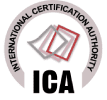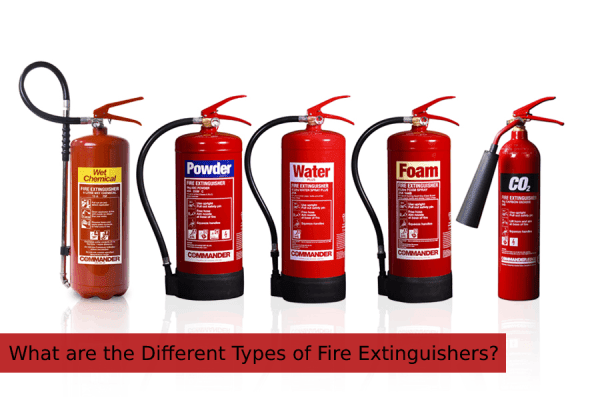What are the Different Types of Fire Extinguishers?

How does an Addressable Fire Alarm System Work
February 13, 2023
What is an Annual Maintenance Contract and Why it is Important?
February 28, 2023The difference between life and death is choosing the right fire extinguisher for the relevant class of fire. Below mentioned is a useful guide on how to choose the correct fire extinguisher based on the class of fire for the appropriate scenario.
The difference between life and death is choosing the right fire extinguisher for the relevant class of fire. Below mentioned is a useful guide on how to choose the correct fire extinguisher based on the class of fire for the appropriate scenario.
Class A Fires: They are caused by combustible carbon-based solids like wood, paper, or textiles.
Class B Fires: They are caused by flammable liquids such as petrol, diesel, or oil.
Class C Fires: They are caused by Electrical equipments.
Class D Fires: They are caused by burning metals like aluminium, lithium, or magnesium
Class E Fires: They are caused by the failure of electrical equipment initiated by a spark.
Class F Fires: They are caused by cooking oils and fats.
It is important for a fire extinguisher to conform to BS EN3/ UL Standards in Qatar. It is where at least 95% of the body of the extinguisher must be covered in red, and only 5% of the extinguisher must have color-coded zones. For example, red indicates the extinguisher be used for water, white and red for water mist, cream color for foam, blue for dry powder, yellow for wet chemicals, green for clean agents, and black for CO2 extinguishers.
At Cease Fire Solutions, we are the name you can rely on when it comes to fire extinguisher suppliers, including overseas fire extinguisher suppliers. To find out more details, talk to our team today.
Water fire extinguishers (red label)
Water fire extinguishers are utilized only for Class A fires. It can be used to stop fires caused by paper, wood, straw, rubber, coal, solid plastics, and soft furnishings. They function by spraying water from the nozzle and it covers a large surface area. They are the most common and inexpensive type of fire extinguisher. Some of them have additives present to make the water more effective, including reducing the size and weight of the fire extinguisher. Bear in mind, they are a little expensive. Additionally, they are easy to maintain and the least hazardous. They take out the fire by soaking it in water. You can most likely find these extinguishers in offices, shops, retail premises, schools, etc. They cannot be used in burning fats or oil.
Water spray fire extinguishers
They are suitable to take out fires that involve organic solid materials like wood, paper, plastic, or coal. They cannot be used on oil or electrical appliances. The jet is pointed at the base of the flame and is moved around constantly until the fire is extinguished. A jet nozzle is avoided in favor of a spray nozzle, thereby creating a fine spray at a higher pressure. Furthermore, it hits a wider surface area which subdues the heat more instantly. Additionally, additives can be added to help the water penetrate further into the burning material.
Foam fire extinguishers (cream label)
The foam present in the extinguishers smothers the fire in Class A and B fires, but not in burning fats or cooking oils. They are used to take out fires caused by petrol, paint, or turpentine. They can be also used on a few electrical fires from a meter away. But, they leave a residue that must be cleaned and are more costly than water extinguishers.
Dry powder extinguishers (blue label)
Dry powder fire extinguishers are used to take out Class A, B, and C fires. They work by the powder forming a crust that extinguishes the fire and stops it from spreading. However, they do not have an effective cooling effect on the fire, and there could be a possibility of the fire reigniting. They cannot be used on Class F Fires. Furthermore, they are inexpensive and come in a host of sizes such as 1, 2, 4, 6, 9,12, 25, 50kgs.
CO2 fire extinguishers (black label)
These extinguishers contain pressurized carbon dioxide gas and therefore leave no trace of residue. They are used on Class B fires and Class C electrical fires. This extinguisher operates by suffocating the fire which does not cause damage to the electrical items. CO2 extinguishers are expensive. They are ideally suited for server rooms and factories.
Wet chemical extinguishers (yellow label)
This type of fire extinguisher is suitable for Class F fires and is mainly present in kitchens that have deep-fat fryers. Sometimes, they can be used to extinguish Class A and B fires. The solution is pressurized alkali in water, which when released creates a fine mist cooling the flame and preventing splashing. They are more expensive than other fire extinguisher types.
Cease Fire Solutions is a trusted fire protection company in Doha that deals with all the above-mentioned fire extinguisher types. If you are looking to install a fire extinguisher on your premises, speak with our team today.
Address
PO Box: 37677, Zone No. 57,
Street No. 3, Building No. 79,
Industrial Area, Doha, Qatar.





